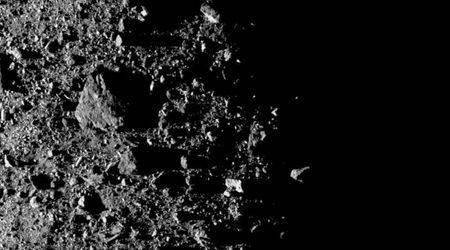SpaceX puts forward Starlink as potential backup to GPS in future navigation systems

SpaceX is proposing its Starlink satellite constellation as a viable alternative to the Global Positioning System (GPS). It is presenting positioning, navigation, and timing (PNT) services as a part of the proposal, according to Aviation Week Network. Jameson Dempsey, the director of satellite policy, wrote in a letter to the Federal Communications Commission (FCC), hinting at the Starlink low-Earth orbit (LEO) satellite system as a viable option. He said that PNT could be offered “as a service alongside high-speed, low-latency broadband and ubiquitous mobile connectivity.”

The FCC announced an inquiry to find an alternative for GPS and required the input of industry stakeholders. The PNT service is an obvious extension of the direct-to-device Starlink communication service for this purpose. “These emerging mobile-satellite services will have the capability to deliver GPS-independent PNT as a part of their offerings directly to consumer devices, including through ongoing standards work at the 3GPP (3rd Generation Partner Project), making them an ideal complement or alternative to GPS,” Dempsey wrote in the letter to the FCC.
NEWS: As the FCC considers GPS alternatives, SpaceX says its @Starlink satellites are already up for the task.
— Sawyer Merritt (@SawyerMerritt) May 14, 2025
SpaceX made its pitch today in a 5-page letter to the FCC after the commission kicked off a public inquiry about developing alternatives to GPS, which has long been run… pic.twitter.com/FYBQ29kZHo
Starlink operates around 7,500 satellites in Low Earth Orbit, with many more planned in the years ahead. The system was originally made for high-speed, low-latency broadband services, but its latest generation includes enhanced PNT capabilities, according to Drive Tesla. This enhancement will meet the criteria of the FCC’s goal to ensure that it diversifies the nation’s dependence on a single GPS provider. This idea of an alternative for the FCC was a product of its concern about the current system being vulnerable to interference, jamming, and spoofing.

In response to the inquiry, SpaceX submitted a five-page letter about the Starlink system and a “market-driven approach” to choose an operator. Considering the investment of SpaceX in the direct-to-device (DtD) services launching commercially in the U.S. with T-Mobile, this request has high chances. Though the accuracy rates and specifics of the PNT service were not detailed, this system promised stable functions if GPS became unavailable. The perfect marketing strategy that ensures reliability and resilience is delivered to the public as a global user of PNT.

The FCC drew up an initiative called “Promoting the Development of Positioning, Navigation and Timing Technologies and Solutions.” This explores space-based and terrestrial alternatives for PNT functions, according to GPS World. This will ensure national security, public safety, and economic stability. The alternatives should focus on robustness, geographic coverage, and resilience to interference, to align with their parameters. Starlink terminals already gave a timing accuracy of nanosecond-level and positioning of meter-level by satellite measurements.
SpaceX is aiming to make Starlink satellites an alternative to GPS. Their new low-Earth orbit satellites could offer more reliable and resilient positioning services, reducing our dependence on traditional GPS. #Starlink #GPS #SpaceX
— MuskAuthority (@MuskAuthority) May 20, 2025
The letter also highlighted the architecture of the Starlink system, which had thousands of satellites in LEO for global coverage and short signal travel times. It was found that SpaceX was not alone in this race to be chosen for a global PNT system, stated Drive Tesla. Globalstar, the satellite provider of Apple’s emergency SOS feature, also submitted a letter to the FCC about its PNT capabilities. Several other industry names, including OneWeb, Eutelsat, and Amazon’s Project Kuiper, are also capable of producing the required PNT needs, diversifying the market.









